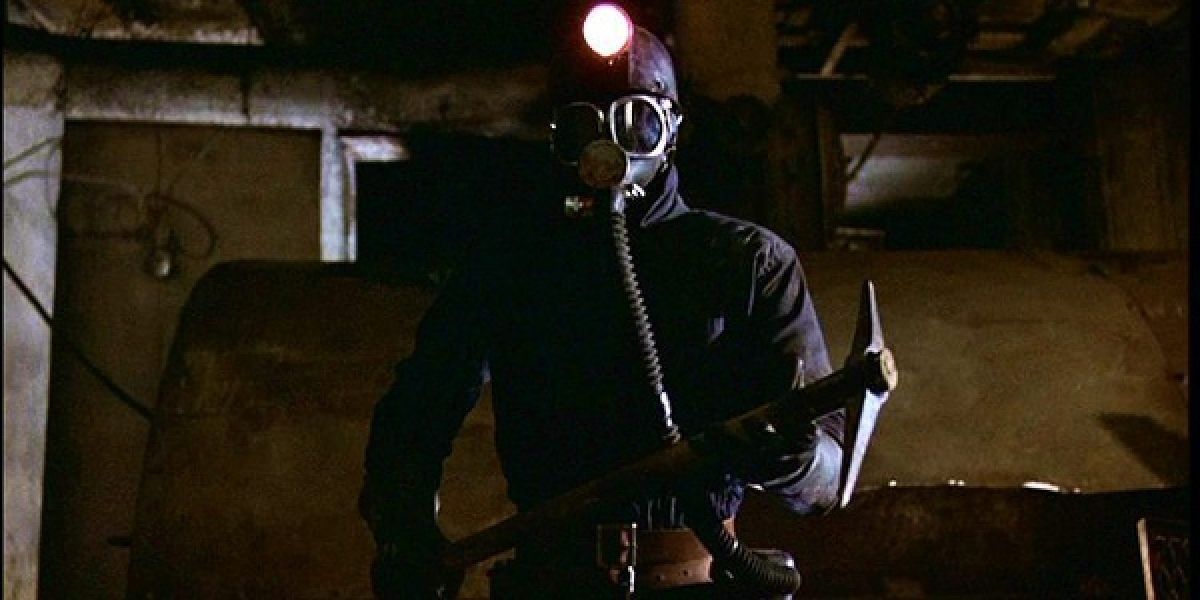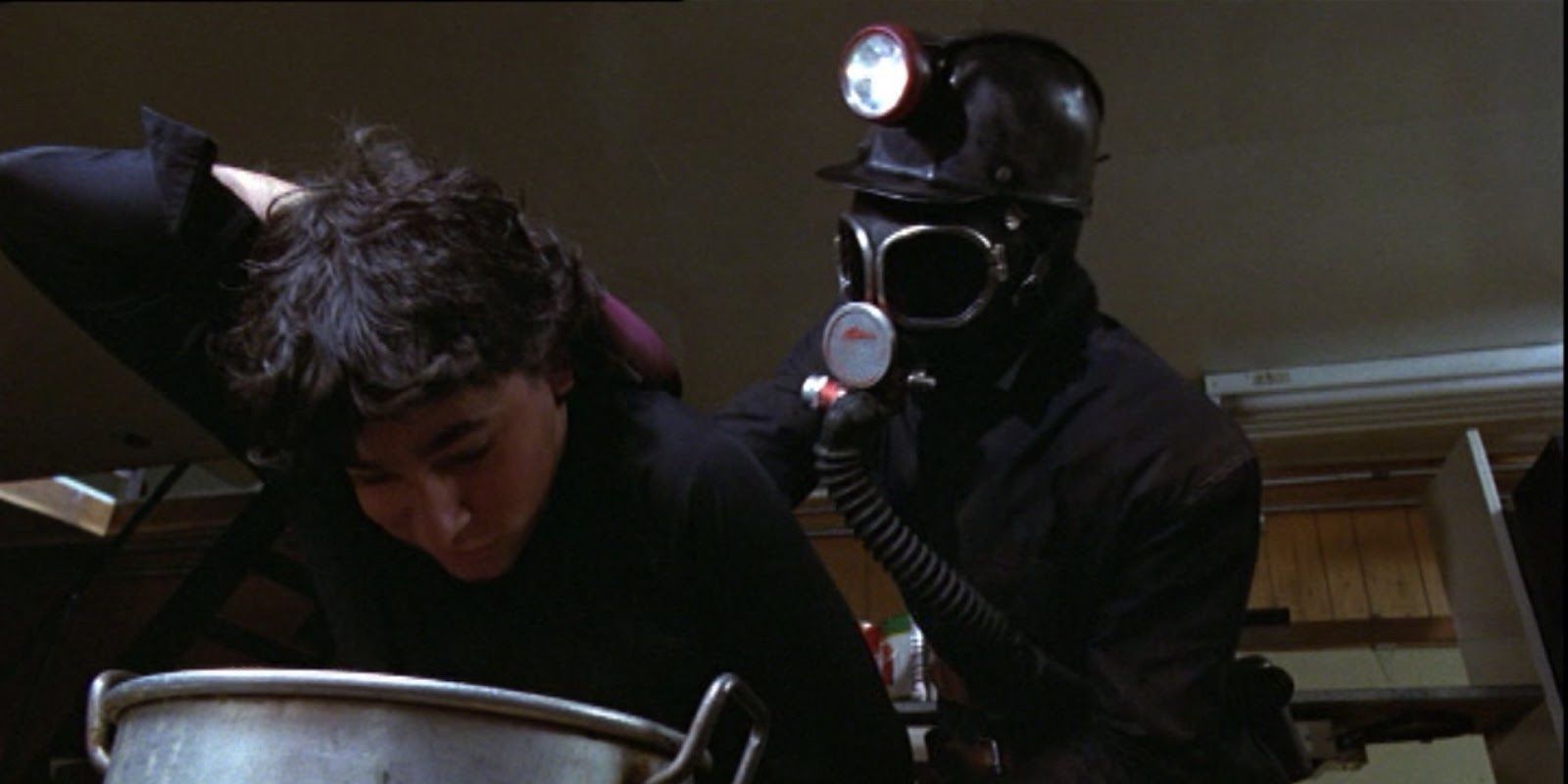The original My Bloody Valentine is a better movie in its uncut form with gory effects intact. The 1981 release was heavily cut in order to merit an R rating; compromising both suspense and narrative flow.
After the huge success of John Carpenter’s Halloween in 1978, a slew of similar body count films flooded the teen market. Many of these productions, eventually dubbed “slasher movies,” even used a holiday to cement their slavish commitment to formula. The most notable film to capitalize on Halloween’s success was the Paramount pick-up Friday the 13th. The studio took a gamble and put a large advertising budget behind the low budget production, and ended up making a killing during the summer of 1980. Soon after, mad killers were ruining proms, graduations, birthdays, and even Christmas.
Hoping that the “death date” craze would continue, Paramount bought the Canadian slasher, My Bloody Valentine. George Mihalka’s film about a psychotic miner killing people who had the audacity to celebrate Valentine’s Day was, on the surface, a typical entry in the sub-genre. A group of young adults, gathered for a celebration, each being systematically and brutally killed as retribution for a tragic event years ago was old hat by February 1981. But the calling card for such a film, its gory special effects, was still a major factor in generating interest. Genre magazines such as Fangoria trumpeted the ingenious practical effects by Tom Burman.
Uncut Version Of My Bloody Valentine Is A Much Better Movie
Mindful of the critical backlash of the violence in the R-rated Friday the 13th, the Motion Picture Association of America (MPAA) began to take a harder stance on slasher films. Mihalka’s movie was severely cut to appease the MPAA, which had demanded several seconds excised in order for it to receive an R rating. By the time it was released by Paramount, My Bloody Valentine looked nothing like the advanced publicity had promised. In fact, the cut that played theatrically was far less graphic than any modern network TV show. With most of Burman’s effect work gone, and the requisite bad reviews, the film was not a hit; it pulled in less than $6 million at the box office. While horror fans may have been disappointed by the trimmed violence, Mihalka’s film developed a strong cult following through cable and video screenings.
Many admired the sure direction and grounded, working-class sense of setting that was achieved by shooting in an actual mining town. My Bloody Valentine also has a script that, while hitting all the beats of a typical slasher movie, is more character-based than most. When boutique DVD label Scream Factory released a virtually uncut version to the public, critical reaction was overwhelmingly positive. The reinstated footage, which is extreme and unforgiving, emphasizes the anger of the killer by adding a layer of menace that was missing from the theatrical cut. Harry Warden, the pick-axe killer wearing miner gear, doesn’t just murder his victims, he brutally kills and mangles them. Poor Mabel (Patricia Hamilton) is pick-axed and thrown into a laundry drier only to cook until her disfigured body is discovered hours later.
Bartender Happy (Jack Van Evera) is pick-axed through his neck; eyeball at the end of a pick's spike and dragged on the ground by his head. Sylvia (Helene Udy) is hoisted up and impaled by a pointed shower nozzle through her mouth, turning her into a human fountain. These reinstated shots, and many more, erase the sometimes awkward editing used to soften them by adding a flow and momentum missing from the released version. The restored My Bloody Valentine is every bit as good as the original Friday the 13th and immensely better than most similar titles of the era. Harry may not be as famous as some of his fellow masked contemporaries, but at least now his fanbase can fully appreciate his passionate, and bloody, thirst for revenge.


